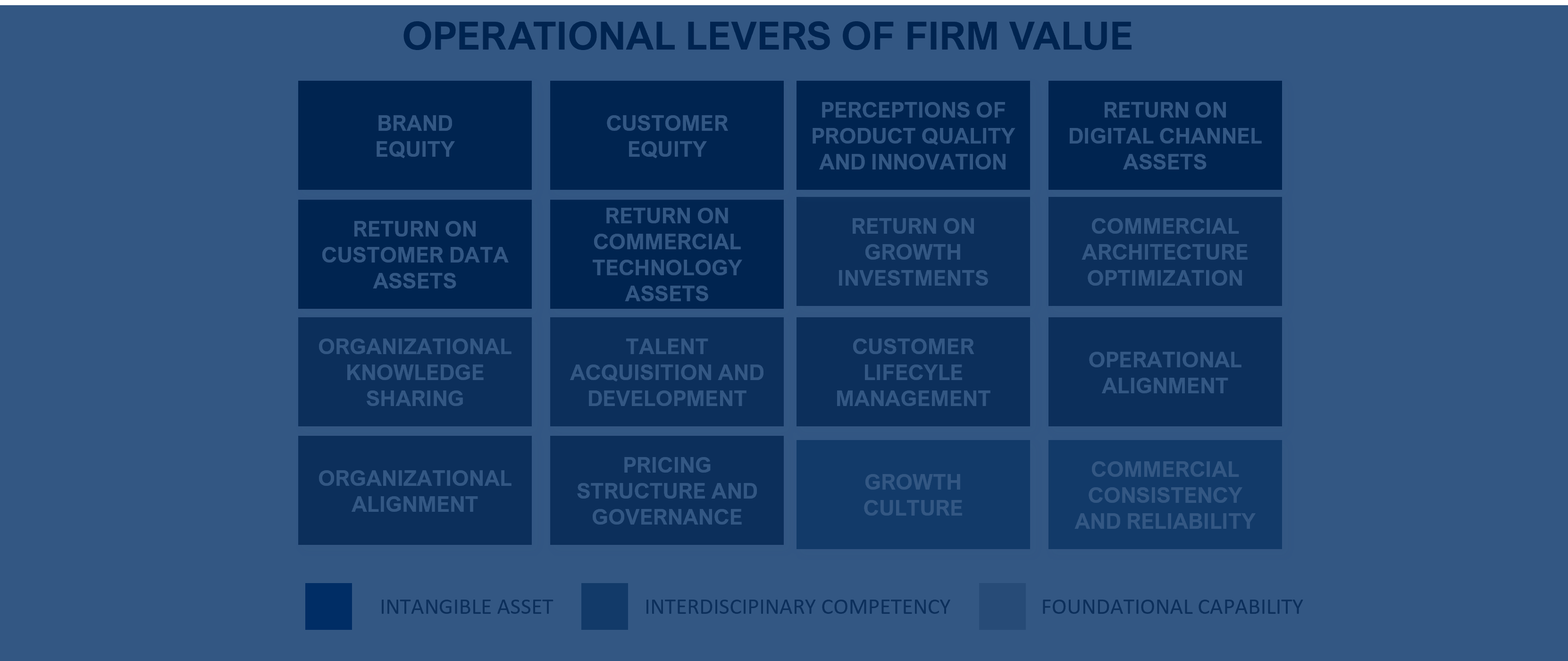Three Keys to Revenue Operations Success
How CROs Can Define, Fund, and Accelerate Revenue Operations to Unlock More Growth
Over 90% of businesses are actively realigning their revenue teams, systems, and processes to generate more revenue and profit growth through better teamwork and utilization of their commercial assets. This has led to the emergence of the Chief Revenue Officer and made Revenue Operations one of the fastest growing jobs in North America.
These “next generation” growth leaders face a unique set of challenges and opportunities as they try to connect the dots across their commercial operations to drive more consistent and scalable growth. Over the last year, our organization has conducted over fifty interviews with CROs and Revenue Operations leaders and evaluated over 100 academic and commercial research studies on commercial transformation. Most of the leaders we spoke with struggle to manage the complexity of the modern commercial model. Sixty two percent were challenged by the complexities of fostering teamwork across marketing, sales, product, finance and analytics functions. Almost two thirds believe the cultural and business change management challenges associated with Revenue Operations gate their organizations' ability to implement, adopt, and act on these growth strategies. Fifty three percent cited rising technology complexity as an obstacle to realizing the potential of Revenue Operations in their organization. Overall, there more than a few headwinds handicapping their efforts to better align their revenue teams and the systems, processes, data and technology assets that support them.

The headline from all that analysis is there are three things growth leaders will have to get right immediately if they are going to succeed. Tackling these three obstacles should be the first order of business for anyone with a CRO or Revenue Operations title.
Success Factor One: Define the role, remit, and goal of Revenue Operations. Revenue Operations may be one of the fastest growing jobs in the US, but a quick Google search or scan of job postings will tell you nobody really agrees on what Revenue Operations is. That’s because each RevOps role is unique to the commercial model of the business, and the maturity of their operations. Defining the role is like shooting at a moving target because over time businesses will collapse five core disciplines and incorporate 12 capabilities into the function. So smart leaders are “designing for change” by anticipating consolidation and alignment of roles, operations and processes along the revenue cycle over time. For example, the imperative to align data and processes along the revenue cycle is leading to the inevitable consolidation of the marketing and sales operations functions, according to Chris Thompson, VP of Global Marketing Operations at Conga. “What is the difference between Marketing Operations and Sales Operations? – in two years there will not be one,” says Thompson. Our team has built a benchmark report that includes a 36 point Revenue Operations maturity model which defines how different roles should align given the current state of your commercial transformation. But it also provides a roadmap for “stair stepping” your organization towards greater alignment of sales, marketing and CX teams, systems, and processes over time.
Success Factor Two: Build a consensus about the business case for funding Revenue Operations. Every business has dots they can connect – and financial opportunity to unlock the latent growth potential in their business. Connecting those dots can improve sales performance, better monetize customer data, and increase returns from customer, data, channel and brand assets. But few CFOs, Boards, or CEOs really understand the “math of growth” in their business. So they lack a financially valid basis for calculating and measuring the financial impact of RevOps. Without a strong business case - CROs and RevOps leaders cannot properly fund growth programs, allocate growth resources, or prioritize growth investments. Seventy two percent of leaders agree establishing a financially valid scorecard and consensus on the contribution of revenue operations actions, investments and initiatives to firm financial performance is essential to prioritize actions, allocate resource investments, and incentivize change. “Senior leadership need a shared understanding of the financial impact commercial transformation can deliver so they can align on priorities and effectively activate the required culture, compensation and resource allocation changes,” says Ashmi Pancholi, VP Revenue Operations and Analytics at Affirm. The problem is that many of the executives running companies don’t fully understand where the core growth leverage is in their business so they are not capitalizing on where the big and low hanging fruit opportunities are.. This is often a cultural, accounting, education, “silo”, or measurement problem. Without a clear mandate or common vocabulary to help leadership quantify value, communicate, budget, measure and prioritize actions, decisions and investments – commercial transformation agendas will be sidelined in favor of better understood but less impactful initiatives. The solution is to get c-suite leaders to understand the growth levers in the business, according to Dominique Hanssens, Professor of Marketing at the UCLA Anderson School of Management “Three audiences – the marketing, finance and accounting disciplines - need to agree on a common math, vocabulary, and knowledge base if they are to gain a greater understanding of the variables that drive future cash flows, valuations, and firm performance in a modern economy,” says Hanssens.
Success Factor Three: Overcome analysis paralysis by prioritizing where to start. CROs and RevOps leaders face the near impossible task of simultaneously building cross functional teams, funding growth capabilities, and prioritizing hundreds of smart growth actions – all while generating measurable results. Without a consensus on the opportunity to grow and the operational growth levers to pull to achieve that growth, CROs and RevOps leaders become paralyzed by too many choices and no clear consensus on where to start. Every Revenue Operations executive we speak to has dozens of smart growth investments and actions they can take that can help them unlock more scalable, profitable and consistent growth. That’s too many choices to make. Particularly when there is no established basis for ranking them by ROI or ease of execution. Building a consensus on the top three to five investments that offer impact and scalability with little investment or change management is essential. To do this, c-suite leaders must understand and agree on the “smart actions” that balance time to value and capability building and connect the dots across the existing commercial systems, data sets and processes to create scalable and consistent growth. “The opportunity for growth leaders and their operations teams is identifying the actions that deliver and realize value for the client,” says Mary Beth Donovan, Global Senior Vice President, Customer Success at EDB.

In all our research identified seven questions every RevOps team must answer if they are going to succeed. To answer these questions, Slate Point Partners has developed a comprehensive benchmark analysis that evaluates the ability of a business to generate consistent and scalable organic growth. It’s called the Quality of Revenue OperationsTM Benchmark Analysis. The benchmark is unique because it evaluates the growth capabilities and assets in your business across the sixteen operational value levers proven to impact future revenues, cash flow, and firm value.
To make it easy for leaders to get started, we’re offering a Revenue Operations Benchmark Self-Assessment (ROBTM) that can quickly answer the seven questions every CRO must get right to succeed. In less than half an hour of time invested, this simple but powerful tool will evaluate your commercial operations against 100% of the drivers of future growth to quickly size the untapped revenue potential in your business, and prioritize the actions that create the most value. This provides you an externally validated fact base to answer the seven questions essential to success. Feel free to reach out to me if you’re interested in learning more about our proprietary model and want to get access to the ROBTM a self-directed assessment tool.
There are three fundamental things anyone with a CRO or Revenue Operations title must get right immediately if they are going to succeed. To help tackle these three obstacles, Slate Point Partners has developed a comprehensive benchmark analysis that evaluates the ability of a business to generate consistent and scalable organic growth called the Revenue Operations Benchmak analysis. In less than thirty minutes, any manager can get answers to the seven core questions growth leaders must answer.


.png)


